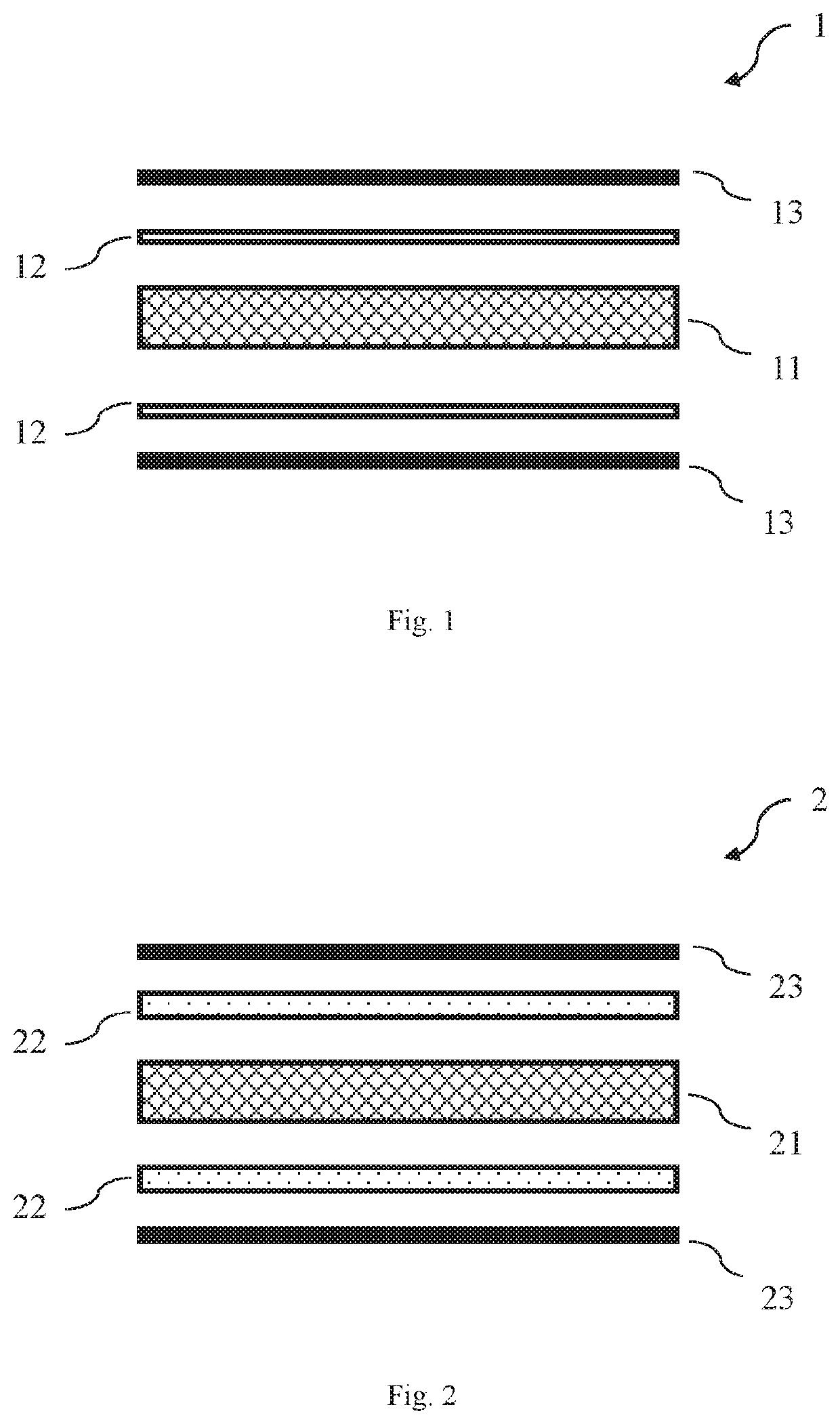Metal-clad laminate and manufacturing method of the same
a metal-clad laminate and manufacturing method technology, applied in metal-clad products, film/foil adhesives without carriers, domestic applications, etc., can solve the problems of poor reliability of metal-clad laminates using fluoropolymer metal-clad laminates, poor dimensional stability of metal-clad laminates with fluoropolymer as the dielectric material at different temperatures, and failure to meet the requirements of conventional epoxy resin dielectric materials, etc., to achieve efficient reduction of filling
- Summary
- Abstract
- Description
- Claims
- Application Information
AI Technical Summary
Benefits of technology
Problems solved by technology
Method used
Image
Examples
example 1
[0079]1000 grams of PTFE dispersion (the solid content of PTFE being 60 wt %) and 400 grams of the filler were mixed evenly to form a varnish of dielectric material (i.e., based on the solid content of the varnish, the amount of filler being 40 wt %). A 1080-type E-glass fabric was impregnated with the varnish, and was subjected to baking at 360° C. to obtain a PTFE prepreg. In addition, 1170 grams of PFA dispersion (the solid content of PFA being 60 wt %) and 300 grams of the filler were mixed evenly to form a varnish of adhesive material (i.e., based on the solid content of the varnish, the amount of filler being 30 wt %). After that, a 1067-type E-glass fabric was impregnated with the varnish, and was subjected to baking at 330° C. to obtain a PFA prepreg containing a filler. Then, 4 sheets of the PTFE prepreg obtained above were first stacked (as the dielectric layer), and then 1 sheet of the PFA prepreg obtained above (as the adhesive layer) was attached to each of the upper an...
example 2
[0080]1000 grams of PTFE dispersion (the solid content of PTFE being 60 wt %) and 400 grams of the filler were mixed evenly to form a varnish of dielectric material (i.e., based on the solid content of the varnish, the amount of filler being 40 wt %). A 1080-type E-glass fabric was then impregnated with the varnish, and was subjected to baking at 360° C. to obtain a PTFE prepreg. In addition, 1000 grams of PFA dispersion (the solid content of PFA being 60 wt %) and 400 grams of the filler were mixed evenly to form a varnish of adhesive material (i.e., based on the solid content of the varnish, the amount of filler being 40 wt %). After that, the varnish was coated on the shiny side of a copper foil by using a scraper, subjected to baking at 330° C., and then stripped off to obtain a filler-containing PFA film. Then, 4 sheets of the PTFE prepreg obtained above were first stacked (as the dielectric layer), and then 1 sheet of the filler-containing PFA film obtained above (as the adhes...
PUM
| Property | Measurement | Unit |
|---|---|---|
| surface roughness | aaaaa | aaaaa |
| melting point | aaaaa | aaaaa |
| melting point | aaaaa | aaaaa |
Abstract
Description
Claims
Application Information
 Login to View More
Login to View More - R&D
- Intellectual Property
- Life Sciences
- Materials
- Tech Scout
- Unparalleled Data Quality
- Higher Quality Content
- 60% Fewer Hallucinations
Browse by: Latest US Patents, China's latest patents, Technical Efficacy Thesaurus, Application Domain, Technology Topic, Popular Technical Reports.
© 2025 PatSnap. All rights reserved.Legal|Privacy policy|Modern Slavery Act Transparency Statement|Sitemap|About US| Contact US: help@patsnap.com

